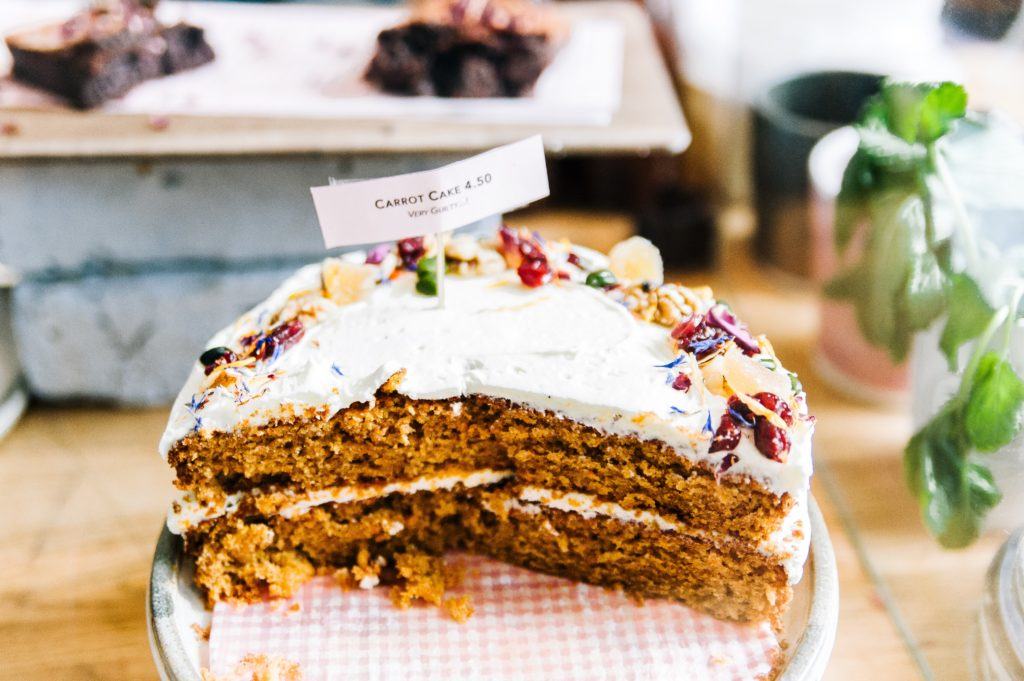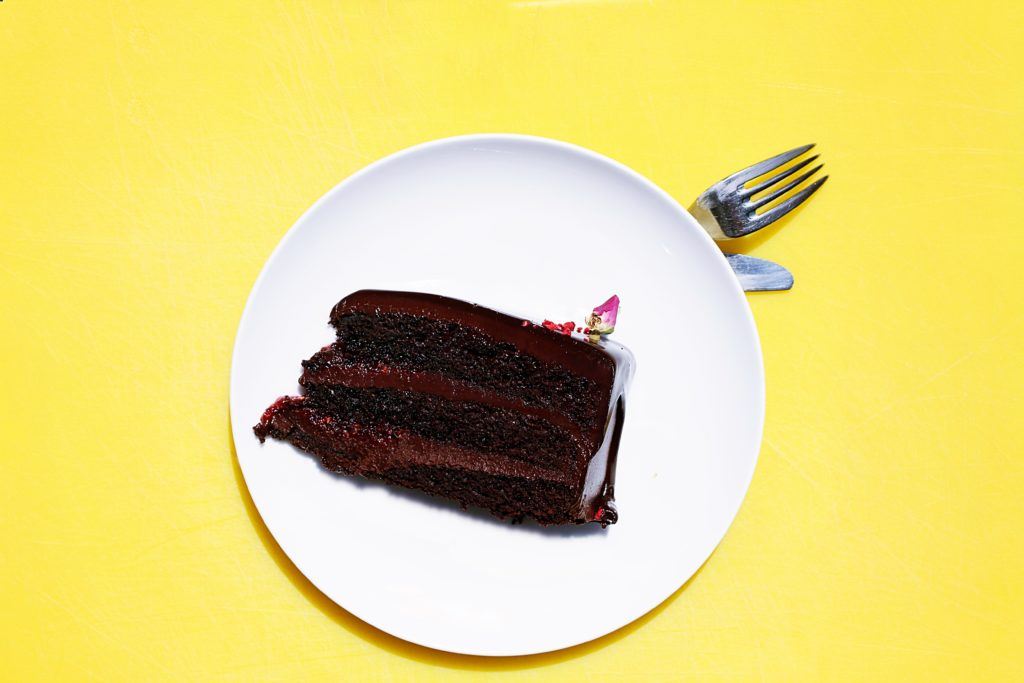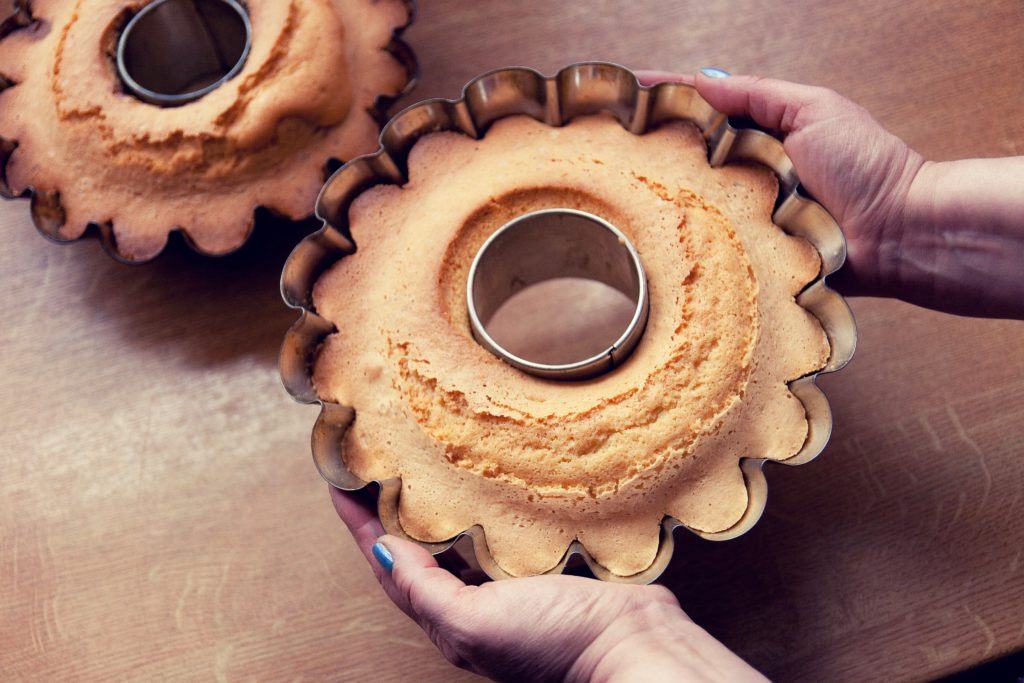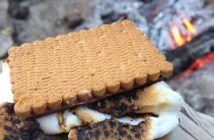There is quite the heated debate over whether cakes made from a mix or cakes made from scratch taste better. In reality, the true answer to this debate is really up to personal preference.
Still, there are many differences between the two concerning moisture retention, and that may be crucial when deciding which type of cake you would rather eat.
Contents
How to Make a Cake Moist When Baking from Scratch or Box
In truth, it is intensely difficult to ensure a cake made from scratch is moist, especially when compared to one made from a store-bought mix. This is because cake mixes already have ingredients within them that help to achieve the soft texture you are aiming for.
While it is not impossible to make a moist cake from scratch, more often than not, and especially for beginner bakers, cakes made from scratch will turn out dry.
If your cakes made from a box-mix do turn out dry, it is most likely because you are either over-baking them or you bought a bad brand.
Most cake box-brands strive to create a consistently moist and fluffy end product that will end up tasting delicious.
Still, whether you prefer to use cake mix or to make your cake from scratch, here are a few tips on making either type of confection mouthwateringly moist.
Moist Cakes from a Mix
Typically, cake-mix boxes will already have a recipe printed on the back of them that you can use.
You can still customize the recipe a little, depending on personal preference, but these recipes will do well enough if you’re seeking a treat that’s simple but still delicious.
If the box recipe calls for oil or butter, you can replace half of that quantity with any kind of fruit puree instead, so as to both absorb moisture and retain it in your cake. As such, this cake will turn out slightly denser, making it easier to slice and serve.
Purees such as applesauce, pumpkin puree, fresh mashed bananas, canned crushed pineapple, or plum purees will work out fine for any box recipe.
You can also substitute two cups of either applesauce or pumpkin puree for the amount of water called for in the cake mix. You should still add the amount of eggs and oil or butter the box recipe calls for, though.
This small substitution makes for a thick batter that will result in a moist and tender cake.
Be sure to let the pan cool completely before you try turning it out, however. Your cake may crumble, break, or stick too much to the pan otherwise.
Please note that whenever you bake with fruit puree, be prepared to wait, as cakes made with it take longer to bake. They should take anywhere from three to five more minutes than the suggested cook time in the recipe.
If you are making a layered cake, make sure to brush each cooled layer with syrup, a technique that professional bakers use to keep their cake layers moist.
You can add equal parts water and sugar into a pan until the sugar dissolves completely to make a simple syrup. If you want this syrup to have more kick to it, feel free to add in flavorings such as vanilla extract, citrus, or any flavor liqueur you enjoy.
After you apply this syrup to your layer, you can then put frosting on it. Be sure to wait for the frosting to dry before placing on the next layer and repeating this process.
You can also choose to spread a moist filling in between cake layers. Fillings like whipped cream or créme Anglaise should suffice for keeping your layers moist.
Moist Cakes Made from Scratch
Many of the tips from the above section also apply here. However, because you are starting completely from scratch, do keep in mind that adding more or using less of a certain ingredient can result in different qualities of cake.
For example, by adding more fats, you will end up with a richer cake. A denser cake typically uses fewer eggs, while a bread-like cake will have more flour.
Recipes that utilize oil, sour cream or buttermilk typically tend to be moist. If your recipe calls for butter, however, be sure that what you are using is real butter, and not margarine sticks, even if their label does claim they are great for baking.
Margarine has water in it, which can throw off your cake’s texture, so it is best to pay just a little extra for real butter to give your cake that soft, moist texture you want.
When you measure out your flour, be sure you do not pack it down into your measuring cup, as this will actually give you more flour than your recipe may call for and result in a dryer cake.
It is best to scoop out your flour with a smaller cup, and then take a tablespoon and pour it into your larger measuring cup. This ensures that you are not packing more flour than you need.
Recipes that call for egg whites tend to produce dryer cakes. Not all of them do, but using only egg whites and not the yolks can result in cakes that are not nearly as moist than when you do incorporate the yolks.
However, if you want to make a completely white cake, then you will have to decide whether you want to sacrifice moisture for color.
If you do decide to replace egg whites for whole eggs or even just the egg yolks, be sure to use only half the amount of eggs that the recipe calls for. For example, if you have a recipe that calls for four egg whites, then you would use two whole eggs or egg yolks instead.
Vanilla cakes from scratch tend to be the most notoriously dry. Be sure to pay extra close attention to this type of cake in the oven to prevent over-baking.
Take care not to over-mix your scratch cake batters, as this can result in a different texture or consistency than you may want, which in turn will affect the overall moisture of the cake. Instead, make sure to mix your cake batter only until it is completely smooth.
Other Basic Tips
A general tip for baking is to use eggs and butter that are at room temperature. They will be softer and easier to beat compared to when they are colder, and will create more tender cakes.
Keep in mind that adding heaps of wet ingredients like a puree or sour cream is not how to make a cake moister. Adding too much of any of these ingredients can result in a wet, sloppy mess rather than the moist cake you want.
Be sure you measure out the items you are substituting and account for the amounts of what the original recipe called for. Use your best judgement when you replace one ingredient for another.
Perhaps the most important tip when making any kind of cake is to not over-bake it. Even when you substitute ingredients in to make a cake moister, over-baking the cake can render these substitutions meaningless.

To be absolutely sure your cake does not end up over-baked, check on it five to ten minutes before the time it is supposed to be thoroughly baked.
All these basic tips, as well as the tips for creating moist cakes above, can also apply to cupcakes.
How to Keep a Cake Moist
Once you’ve made your delicious, moist cake, but end up with leftovers, you will, of course, want to keep it that way for as long as you can.
Depending on the recipe, you will either need to let the cake cool in the pan first or turn the cake out onto a cooling rack after a certain amount of time (this should be specified in the recipe).
If you are not decorating it immediately after this cooling period, it is best to wrap the cake in a few layers of plastic wrap and store it in an airtight container.
You may also choose to freeze your cakes, but be sure to do so immediately after it’s wrapped in plastic wrap. When you later take it out to defrost, the condensation will then soak into the cake and make it very moist indeed. Frozen, unfrosted cakes typically last a little over a week before going stale.
If you want to store a frosted, uncut cake, simply cover it with a cake keeper or an overturned bowl, and keep it at room temperature. It will last four to five days without going stale.
If you want to store cake leftovers that have already been cut, be sure to also store these in an airtight container at room temperature. Any fondant you use will, unfortunately, go soft if left alone for too long, but the cake itself will remain as moist and soft as the day you cut it.
Typically, frosted, cut cakes can last up to three to four days in this manner.
Be sure to make cakes a couple days or so before you need them, so that your stored, unfrosted cakes have time to pack in the moisture. When you take any cakes out of the freezer, they will typically take only a couple hours or so to thaw.
Cupcakes can be stored in the same way. However, unless you are using a frosting that needs to be refrigerated, it is best to store them in an air-tight container at room temperature.
Letting them sit for at least one day can also make them a bit moister and taste a bit richer. Stored in this manner, cupcakes can last about five to seven days.
Here’s a video showing more tips on how to keep a cake moist.
Do you have any tips on how to make a cake more moist?






